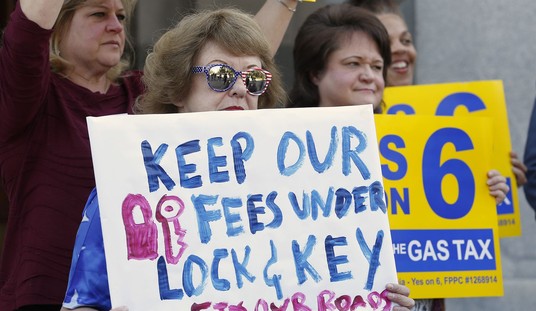Fortunately, the Fourth Amendment is not dead.
In Barnes v. State of Indiana, the Indiana Supreme Court held on May 12th “that there is no right to reasonably resist unlawful entry by police officers. (emphasis added)” However, the facts of the case as recited in the decision show that this holding went far beyond those facts to intrude, absurdly, into Fourth Amendment jurisprudence.
Officer Lenny Reed, the first responder, saw a man leaving an apartment with a bag and began questioning him in the parking lot. Upon identifying the man as Barnes, Reed informed him that officers were responding to a 911 call. Barnes responded that he was getting his things and leaving and that Reed was not needed. Barnes had raised his voice and yelled at Reed, prompting stares from others outside and several warnings from Reed.
Officer Jason Henry arrived on the scene and observed that Barnes was ―very agitated and was yelling. Barnes ―continued to yell, loudly and did not lower his voice until Reed warned that he would be arrested for disorderly conduct. Barnes retorted, ―if you lock me up for Disorderly Conduct, you’re going to be sitting right next to me in a jail cell. Mary came onto the parking lot, threw a black duffle bag in Barnes’s direction, told him to take the rest of his stuff, and returned to the apartment. Reed and Henry followed Barnes back to the apartment. Mary entered the apartment, followed by Barnes, who then turned around and blocked the doorway. Barnes told the officers that they could not enter the apartment and denied Reed’s requests to enter and investigate. Mary did not explicitly invite the officers in, but she told Barnes several times, ―don’t do this and ―just let them in. Reed attempted to enter the apartment, and Barnes shoved him against the wall. A struggle ensued, and the officers used a choke hold and a taser to subdue and arrest Barnes. Barnes suffered an adverse reaction to the taser and was taken to the hospital.
Based on these facts, it is evident that an adequately instructed jury could quite reasonably have convicted Barnes on all counts.
When Barnes was tried on several counts, including “resisting law enforcement,” he requested that an instruction be given to the jury concerning “the right to reasonably resist” when police unlawfully seek to enter a residence. The trial court refused to give the instruction. Barnes was convicted and the Court of Appeals held that the trial court had erred, harmfully to Barnes; it remanded for a new trial. The Indiana Supreme Court disagreed,
Barnes contests that his tendered jury instruction should have been given because it was a correct statement of a viable legal defense supported by the facts and because that defense was not covered by the other instructions. We acknowledge that the Court of Appeals followed its own precedents in its analysis. Now this Court is faced for the first time with the question of whether Indiana should recognize the common-law right to reasonably resist unlawful entry by police officers. We conclude that public policy disfavors any such right. Accordingly, the trial court‘s refusal to give Barnes‘s tendered instruction was not error.
The English common-law right to resist unlawful police action existed for over three hundred years, and some scholars trace its origin to the Magna Carta in 1215. . . . The United States Supreme Court recognized this right in Bad Elk v. United States, 177 U.S. 529, 535 (1900): ―If the officer had no right to arrest, the other party might resist the illegal attempt to arrest him, using no more force than was absolutely necessary to repel the assault constituting the attempt to arrest. The Supreme Court has affirmed this right as recently as 1948. United States v. Di Re, 332 U.S. 581, 594 (1948) (One has an undoubted right to resist an unlawful arrest, and courts will uphold the right of resistance in proper cases.).
The Indiana court went on to say,
We believe however that a right to resist an unlawful police entry into a home is against public policy and is incompatible with modern Fourth Amendment jurisprudence. Nowadays, an aggrieved arrestee has means unavailable at common law for redress against unlawful police action. E.g., Warner, supra, at 330 (citing the dangers of arrest at common law—indefinite detention, lack of bail, disease-infested prisons, physical torture—as reasons for recognizing the right to resist); State v. Hobson, 577 N.W.2d 825, 835–36 (Wis. 1998) (citing the following modern developments: (1) bail, (2) prompt arraignment and determination of probable cause, (3) the exclusionary rule, (4) police department internal review and disciplinary procedure, and (5) civil remedies). We also find that allowing resistance unnecessarily escalates the level of violence and therefore the risk of injuries to all parties involved without preventing the arrest—as evident by the facts of this instant case. E.g., Hobson, 577 N.W.2d at 836 (―But in arrest situations that are often ripe for rapid escalation, one’s measured’ response may fast become excessive.). Further, we note that a warrant is not necessary for every entry into a home. For example, officers may enter the home if they are in ―hot pursuit of the arrestee or if exigent circumstances justified the entry. E.g., United States v. Santana, 427 U.S. 38, 42–43 (1976) (holding that retreat into a defendant‘s house could not thwart an otherwise proper arrest made in the course of a ―hot pursuit‖); Holder v. State, 847 N.E.2d 930, 938 (Ind. 2006) (Possible imminent destruction of evidence is one exigent circumstance that may justify a warrantless entry into a home if the fear on the part of the police that the evidence was immediately about to be destroyed is objectively reasonable.). Even with a warrant, officers may have acted in good faith in entering a home, only to find later that their entry was in error. E.g., Arizona v. Evans, 514 U.S. 1, 11 (1994); United States v. Leon, 468 U.S. 897, 922–25 (1984). In these situations, we find it unwise to allow a homeowner to adjudge the legality of police conduct in the heat of the moment. As we decline to recognize a right to resist unlawful police entry into a home, we decline to recognize a right to batter a police officer as a part of that resistance.
Here, the trial court‘s failure to give the proffered jury instruction was not error. Because we decline to recognize the right to reasonably resist an unlawful police entry, we need not decide the legality of the officers‘ entry into Barnes‘s apartment.
Finally, lest there be any question as to what the Indiana Supreme Court meant to do, it stated “In sum, we hold that [in] Indiana the right to reasonably resist an unlawful police entry into a home is no longer recognized under Indiana law.”
Appellate courts generally limit their legal analyses to the facts of the case before them, for good reason. Failure to do so not only results in otherwise unnecessary future litigation, it also changes the law for no valid reason. The creation of new law is the proper function of legislatures, not courts. Here, however, what the court did went well beyond what even the Indiana Legislature could properly have done.
Quite properly, Justice Dickson stated in a dissent, “In my view, the wholesale abrogation of the historic right of a person to reasonably resist unlawful police entry into his dwelling is unwarranted and unnecessarily broad.” Justice Rucker also dissented, despite his belief that the right to resist an unlawful police entry is passe. He dissented because
the common law rule supporting a citizen’s right to resist unlawful entry into her home rests on a very different ground, namely, the Fourth Amendment to the United States Constitution. Indeed, ―the physical entry of the home is the chief evil against which the wording of the Fourth Amendment is directed. Payton v. New York, 445 U.S. 573, 585 (1980). In my view it is breathtaking that the majority deems it appropriate or even necessary to erode this constitutional protection based on a rationale addressing much different policy considerations. There is simply no reason to abrogate the common law right of a citizen to resist the unlawful police entry into his or her home.
Under the court’s quite unnecessary holding that “there is no right to reasonably resist unlawful entry by police officers (emphasis added),” there would be no right to resist even a patently unlawful police intrusion into one’s home to force payment of a bribe, to steal one’s silverware or for other grossly illegal purposes. Nor would there even be a right to have a jury decide whether that’s what happened. Far fetched? Sure. Are there bad cops? Sure, again. This holding gives them great opportunities.
This case may not get to the Supreme Court of the United States; that requires time and money. It should get there because it purports to abrogate — in Indiana — prior Supreme Court rulings on the Fourth Amendment and because cases embodying bad law tend to breed and multiply. They seem to enjoy higher fertility rates than do cases embodying good law.









Join the conversation as a VIP Member